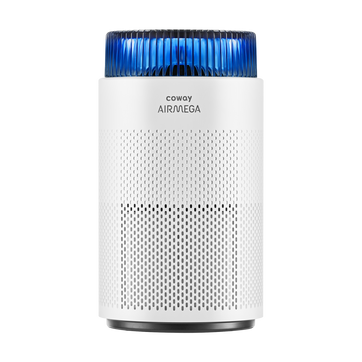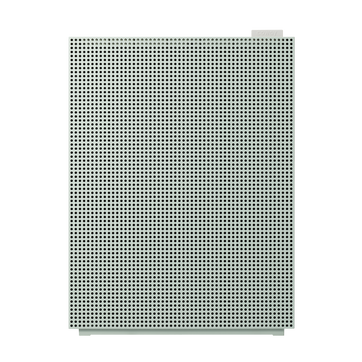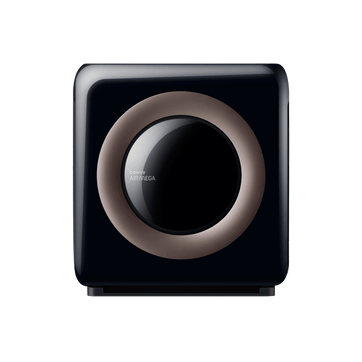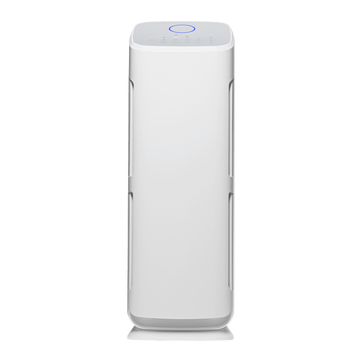
Where Does Dust Come From? The Surprising Sources of Those Pesky Particles
It's the weekend cleaning ritual we all know too well: you dust every surface, vacuum every corner, and feel that brief satisfaction of a truly clean home. Then, seemingly out of nowhere, those familiar gray particles start reappearing just days later.
The mystery of never-ending dust frustrates even the most dedicated cleaners, leaving us wondering: Where does all this dust come from, and why does it accumulate so quickly? The answers might surprise you and finally help you break the cycle of constant dusting.
The Mystery of Never-Ending Dust
The truth about dust is both fascinating and slightly unsettling. That gray film collecting on your shelves and under your bed is actually a complex mixture of particles from both inside and outside your home, telling a story about your environment and lifestyle.
What's Really in Your Dust?
Contrary to popular belief, dust isn't primarily made of dead skin cells—though they are certainly part of the mix. Your household dust is actually a diverse cocktail of particles.
From Outside Your Home
- Soil particles tracked in on shoes and clothing
- Pollen drifting through open windows and doors
- Outdoor pollution including vehicle emissions and industrial particles
- Microplastics from the broader environment
From Inside Your Home
- Textile fibers from carpets, furniture, and clothing
- Pet dander and hair from your furry family members
- Food particles from cooking and eating
- Dead skin cells (yes, but not as much as you might think)
- Paper and cardboard dust from books and packaging
Environmental scientists estimate that about two-thirds of the dust in your home actually originates outdoors, making its way inside through windows, doors, ventilation systems, and on your shoes and clothing.
The Invisible Inhabitants of Dust
What makes dust particularly problematic isn't just its composition but what lives in it. Dust creates a microhabitat for:
- Dust mites: These microscopic relatives of spiders thrive in the warm, humid environments of our homes, feeding on the organic components of dust.
- Bacteria and fungi: Dust provides a landing spot for various microorganisms that can affect indoor air quality.
- Allergens: Many components of dust can trigger allergic reactions and respiratory issues.
Why Your Home's Design Might Be Making Dust Worse
Certain elements of modern homes can actually contribute to dust accumulation:
- Forced-air heating and cooling systems circulate dust throughout your home
- Wall-to-wall carpeting traps and holds dust particles
- Upholstered furniture releases fibers and traps incoming particles
- Clutter and collectibles provide more surfaces for dust to settle on
How the Revolutionary Airmega 350 and 450 Combat Dust
While regular cleaning is essential, advanced air purification technology like the new Airmega 350 and 450 models offers a powerful solution to the never-ending dust cycle.
What sets these models apart is their innovative HyperVortex™ technology, which creates a powerful airflow pattern that efficiently captures dust particles before they can settle on your surfaces:
- The Eagle Vane Design with aerodynamic blades captures dust from all corners of your room
- The cylindrical design creates a powerful vortex through bottom air intake
- Dimple Duct Technology reduces air resistance, similar to golf ball dimples
- The Airmega 350 effectively purifies spaces up to 2,640 square feet hourly, while the more powerful 450 handles an impressive 3,285 square feet. This extensive coverage makes them ideal for open-concept homes where dust can freely circulate.
Most importantly, these models use a customizable 3-in-1 filtration system that targets the specific dust challenges in your home:
- Fresh Starter+ filter for general dust and particles
- Intense Smoke+ filter for homes near high-traffic areas with outdoor pollution
- Allergen+ filter specifically designed to capture the dust components that trigger allergies
7 Practical Ways to Reduce Dust in Your Home
While air purification is a crucial component, a comprehensive approach to dust control includes:
1. Create a Shoe-Free Home
Since most dust originates outdoors, removing shoes at the entrance prevents tracking soil and outdoor particles throughout your home. Place a stylish shoe rack or basket by the door to make this habit easy to maintain.
2. Implement Strategic Cleaning Routines
Dust from top to bottom, starting with ceiling fans, moving to shelves and furniture, and finishing with floors. This prevents dust from redistributing from one surface to another. To enhance your cleaning routine, you can set a timer for your Airmega to run on maximum airflow while you clean, ensuring optimal air purification when dust is most agitated.
For ultimate convenience, control your Airmega from anywhere in your home through smart home integration with Google Nest, Alexa, or the dedicated IoCare app. This seamless connectivity allows you to manage your air purifier from a different floor or room—simply activate Turbo mode from your smartphone while dusting the bedroom, or adjust settings via voice command while focusing on other cleaning tasks. These smart features are designed to complement modern, connected lifestyles, making it effortless to maintain healthy air quality throughout your home.
3. Minimize Textile Dust Sources
Consider replacing heavy drapes with washable blinds, choosing hardwood over carpeting, and selecting furniture with smooth, easy-to-clean surfaces.
4. Maintain Optimal Humidity
Dust mites thrive in humid environments. Keep indoor humidity between 30-50% to discourage dust mite populations while preventing static electricity that can attract dust particles.
5. Upgrade Your Bedding Protection
Since we spend approximately one-third of our lives in bed, encasing mattresses and pillows in allergen-proof covers can significantly reduce dust exposure during sleep.
6. Declutter Regularly
The fewer items you have on display, the fewer surfaces dust has to settle on. Store collections in glass cabinets and keep flat surfaces clear for easier cleaning.
7. Leverage Smart Air Purification
Position your Airmega strategically in high-traffic areas of your home where dust accumulation is most noticeable. The intelligent sensors in the 350 and 450 models continuously monitor air quality, automatically adjusting operation when dust levels rise.
For faster results, models like the 350 and 450 include Turbo mode for commercial-grade cleaning, which maximizes fan speed to remove dust, smoke, and other particles from the air more quickly. Medium-large models feature Rapid mode that will clean your air for a set period of time and then automatically turn off on its own to conserve energy, typically when the air quality has remained purified for 10 minutes or more.
The Future of Dust Control
As our understanding of indoor air quality evolves, so does our approach to dust management. The revolutionary design of the Airmega 350 and 450 represents a shift from reactive cleaning to proactive dust prevention.
Their ENERGY STAR certification means they operate efficiently, with power consumption ranging from just 9W to 65W per hour. The Eco Mode automatically adjusts based on detected dust levels, powering down when air quality is good and activating when needed—a truly sustainable approach to dust management.
A Breath of Fresh Perspective
While dust will always be present in our homes to some degree, understanding its sources empowers you to take effective action. By combining smart cleaning practices with advanced purification technology, you can dramatically reduce the amount of dust in your home—and more importantly, the amount you breathe in every day.
Your home should be your sanctuary, not a collection site for environmental particles. With the right approach to dust management, you can create a cleaner, healthier living space where you can truly breathe easy.
Disclaimers
1Coway air purifiers have been proven to trap dust, pollen, dander, viruses and bacteria in the air based on KCL (Korea Conformity Laboratories) testing.They have been tested in a 30㎥ size chamber according to the Korea Air Cleaning Association standard (SPS-KACA 002-132:2022 Modified) to measure the 0.01㎛ size of particle removal rate. It was tested on maximum airflow speed in normal room temperature and humidity conditions. The performance may vary in the actual living environment of customers.
→ Tested with Airmega Aim, 100, 150, 160, Airmega Tower AP-1216L, Airmega Mighty AP-1512HH, Airmega Mighty AP-1512HHS, 200M, Icon, IconS, 230, 240, 250, 250 Art, 250S, 300, 300S, 350, 400, 400S, 450, ProX
299.97% of viruses, bacteria, fungi and pollen were verified to be removed from the air for Coway air purifiers which have Green True HEPA™ filter applied based on the Japan Food Research Laboratories(JFRL) testing according to JEM 1467 standard.
→ Tested with Coway Airmega Mighty AP-1512HH, Airmega Mighty AP-1512HHS, 250, 250 Art, 250S, 300, 300S, 400, 400S
→ All tested by JFRL and received above result within below time.
All tested by JFRL and received above result within below time.
- Virus: Tested with Escherichia coli phage ΦX174 NBRC 103405, 60 minutes
- Bacteria: Tested with Staphylococcus epidermidis NBRC 12993, 60 minutes
- Fungi/Mold: Tested with Penicillium citrinum NBRC 6352, 60 minutes
- Pollen: Tested with Cedar Pollen extract, 60 minutes
3Aerosol test conducted in a Biosafety level 3 laboratory with two Coway air purifier models, Coway Airmega 250 and 400 for removal of SARS-CoV-2 Aerosol by US based MRI Global, a not-for-profit laboratory and partner of US Department of Defense. The test was conducted in a 13.1ft3 chamber. Virus was aerosolized for 15 minutes and the product was turned on high for 2 minutes. Result showed each product effectively removed over 99.98% of the SARS-CoV-2 in 2 minutes. This is a result from a laboratory experiment condition and result may vary in different conditions. This result does not imply it kills SARS-CoV-2 or prevents the transmission of Covid-19. Coway Airmega 250S and 400S are identical to the tested models and has equal performance with an additional mobile connectivity function.
4The concentration of ammonia, acetaldehyde and acetic acid were proven to be removed within 30 minutes by FCG Research Institute, Inc. Human Life Science Lab. It is not a demonstration result in the actual use space. Not all odors and gases may be supported. → Tested with Coway Airmega 150, 160, Airmega Mighty AP-1512HH, Airmega Mighty AP-1512HHS, 400, 400S
5The coverage area of the air purifier is based on an area where the air cleaner can make two air changes per hour (ACPH). An air change per hour translates to how many times an air purifier can clean an area, assuming the height of a ceiling to be 8 ft, in one hour. Therefore ** means two air changes per hour means that the cleaner can clean the area once every 30 minutes and * means air changes per hour means that the air purifier can clean the area once every 60 minutes.
10Terms and conditions apply. Discounts, including promotions, coupons, bundle discount and subscription discount, cannot be stacked on top of other coupons. During promotional periods, discount codes will not be able to be applied to orders. Promo codes may apply to products only—filters, accessories, and new products within 3 months of the release date are not included.



























